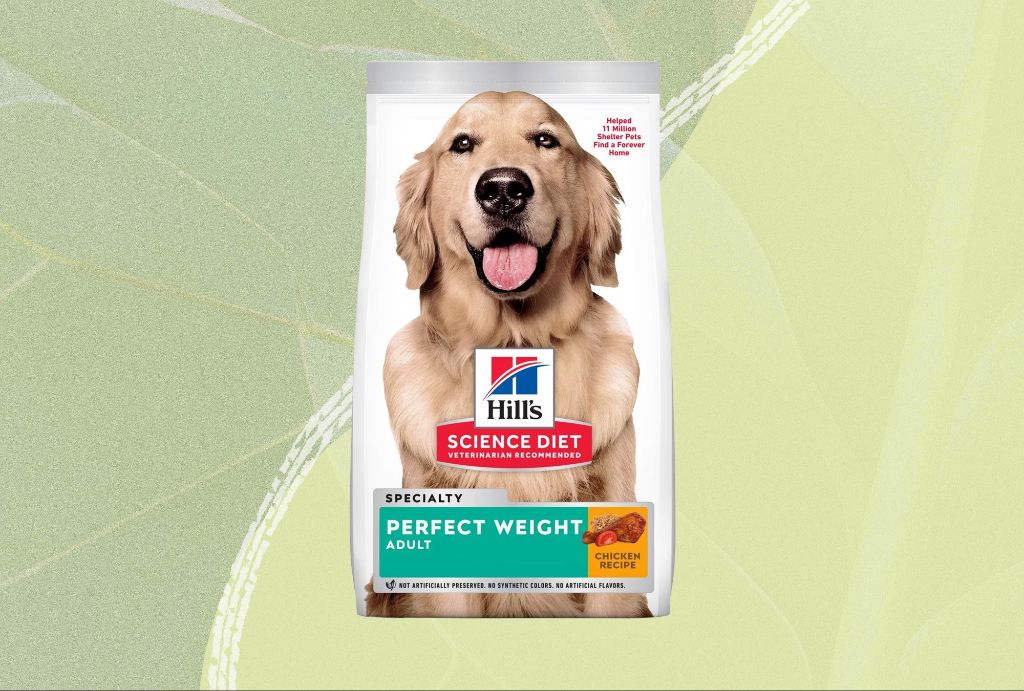Introduction
Pet owners may consider feeding their younger dogs senior dog food for a few reasons. Some key motivations include:
- Belief that senior dog food is higher quality or more nutritious
- Perception that senior food supports joint health
- Senior food is appropriate for less active dogs
- Accidentally buying senior food and wanting to use it up
- Having multiple dogs and wanting to feed them the same food
While senior dog food can be fed to younger dogs in many cases, owners should understand the differences between age-specific formulas. This article will provide an in-depth look at pros, cons, appropriate age ranges, and feeding tips for giving senior dog food to puppies and younger adult dogs.
Difference Between Regular and Senior Dog Food
There are some key differences in the formulation of regular versus senior dog food that owners should be aware of:
Senior dog food contains less calories and lower fat content than regular adult dog food. This is because senior dogs are typically less active and have a slower metabolism, so they require fewer calories to maintain their weight. Too many calories can lead to obesity in older dogs 1.
Senior dog food contains more fiber. Fiber helps with digestive issues that become more common in older dogs, such as constipation. The additional fiber helps keep your senior dog regular 2.
Senior dog foods have enhanced levels of antioxidants like vitamin E and omega-3 fatty acids from ingredients like fish oil. Antioxidants combat aging and inflammation, while omega-3s promote brain, eye, and joint health. These nutrients become even more important as dogs get older 3.
Benefits of Feeding Senior Food to Younger Dogs
There are some potential benefits to feeding a younger dog senior dog food. Here are a few of the main advantages:
Potential weight control – Many senior dog foods have fewer calories and lower fat content. This can help prevent obesity, which is a common problem, especially in middle-aged dogs. The reduced calories in senior food may help young dogs maintain a healthy weight.

Support joint health – Some senior dog foods include glucosamine, chondroitin, omega-3s and other ingredients to support joint health and mobility. These can help reduce pain and inflammation in joints. Feeding a joint-friendly senior food may benefit younger dogs prone to joint issues.
Boost brain function – Senior dog foods often contain ingredients like antioxidants, vitamins E and C, and L-carnitine to help cognitive function. These nutrients help reduce oxidative damage and inflammation in the brain. Young dogs can benefit from these brain-boosting nutrients.
Overall, the tailored nutrition profile of senior dog food, with reduced calories, joint support, and brain nutrients can potentially benefit dogs that are middle-aged or younger. However, it’s best to consult your veterinarian before switching.
Downsides of Feeding Senior Food to Younger Dogs
There are some potential downsides to feeding senior dog food to younger, more active dogs. The two main concerns are:
- Lack of nutrients for growth and development – Senior dog foods are designed for less active, adult dogs who are no longer growing. As a result, senior foods often have reduced levels of key nutrients like protein, fat, and calcium that young, growing dogs need.
- Too few calories for activity level – Senior dog foods also tend to be lower in calories because senior dogs are less active. Feeding a highly active younger dog senior food may not provide enough energy for their lifestyle.
According to veterinarians, some potential effects of feeding senior dog food to puppies or adolescent dogs when their nutrient needs are higher include:
- Stunted growth
- Muscle loss or weakness
- Increased risk of bone fractures or joint issues
- Poor skin and coat condition

While the occasional bowl may not cause issues, it’s best to avoid feeding younger dogs senior food formulas long-term or exclusively. Their high energy and growth requirements call for food with more calories, protein, fat, and other nutrients. It’s always best to feed an age-appropriate diet tailored to your dog’s life stage and activity level.
When Can Puppies Switch to Senior Food?
Around age 7 is a common benchmark for switching from regular adult dog food to senior dog food, according to PetMD (PetMD). However, the optimal timing varies based on the breed and size of your dog. Smaller breeds generally transition to senior food earlier, around ages 7-9, while larger breeds make the switch later, around ages 8-10.
It’s best to consult your veterinarian to determine the right time to transition your puppy to senior dog food based on their specific breed, size, and health status. Your vet will take into account your dog’s expected lifespan and can advise you on signs of aging to look out for. They can provide personalized guidelines on when to make the change to senior dog food.
The goal is to switch to senior food formulations while your dog is still considered healthy, before any age-related health issues begin, so they can benefit from the tailored nutrition senior foods provide. With your vet’s guidance, you can optimize your puppy’s diet for their senior years.
Tips for Transitioning to Senior Dog Food
When switching your younger dog to a senior dog food formula, it’s important to gradually transition between the foods over the course of 5-14 days. This gradual transition gives your dog’s digestive system time to adapt to the new food. According to PetMD, “Ideally, this should be done over 7-10 days or more, with a complete transition to the new food by 14 days.”
To transition, first mix a small amount of the new senior dog food in with your dog’s current food, Starting with a 75%/25% ratio of old to new food. Slowly increase the ratio of new food while decreasing the ratio of old food over the course of a week or two. The AKC recommends increasing the ratio by about 25% each day until your dog is eating 100% new food.
Monitor your dog’s energy levels, appetite, weight, and stool consistency throughout the transition. Gradual transitions can help minimize any digestive upset. If any symptoms occur, slow down the transition by keeping the ratio of old to new food consistent for a few days before continuing to increase the new food ratio.
Additionally, watch your dog’s weight during the transition. Senior dog foods tend to be lower in calories, so you may need to adjust portion sizes to maintain your younger dog’s optimal weight. Your veterinarian can help advise you on proper feeding amounts.
Ingredients to Look for in Senior Dog Food
When shopping for senior dog food, it’s important to look for certain key ingredients that can benefit your older dog’s health and wellbeing. Some important ingredients to look for include:
Antioxidants like vitamins E and C – Antioxidants can help counteract some of the damage caused by free radicals and oxidative stress in the body. Vitamins E and C are powerful antioxidants that can support your senior dog’s immune system and help reduce inflammation. https://www.dogfoodadvisor.com/best-dog-foods/senior-dog-food/

Glucosamine/chondroitin – These compounds can help maintain healthy joints by supporting cartilage. As dogs age, their joints are more prone to stiffness and arthritis, so ingredients like glucosamine and chondroitin are important for mobility and flexibility. Look for senior dog foods that list these as specific ingredients.
Omega-3 fatty acids – Found in fish oils and certain plant oils, omega-3s help reduce inflammation, support cognitive function, and promote a healthy skin and coat. Omega-3s are an essential nutrient for senior dogs. https://www.greymuzzle.org/resources/health-and-well-being/best-senior-dog-food-key-ingredients-look
Reading the labels and looking for these key ingredients can help you find a nutritious senior dog food formulated for your older dog’s health needs.
How Much to Feed a Younger Dog Senior Food
When feeding your younger dog senior dog food, it’s important to follow the label feeding guidelines based on your dog’s weight. Senior dog foods provide less calories per cup than regular adult dog food. So you’ll typically feed a larger quantity of senior food compared to regular food for the same caloric intake. The food label will specify the recommended feeding amounts based on your dog’s weight.
For example, if your 1 year old dog weighs 20 lbs, the senior food label may recommend 1/2 cup to 3/4 cup per day. Whereas a regular adult food may only recommend 1/3 to 1/2 cup for a 20 lb dog. It’s crucial to follow the senior food guidelines to ensure your younger dog gets adequate calories and nutrition.
You also need to monitor your dog’s weight and body condition while transitioning to senior dog food. If they start to lose weight or seem underfed, you may need to slowly increase the amount of senior food. The key is adjusting quantities based on your individual dog’s needs. Your vet can help determine ideal caloric intake and verify if any feeding adjustments are needed.
With the right feeding amounts tailored to your dog’s weight and monitored over time, senior dog food can be a healthy option for younger dogs. But work closely with your vet and follow label guidelines to meet your dog’s unique nutritional requirements.
When to Ask Your Vet About Senior Dog Food
If you have concerns about your younger dog’s growth and development, it’s important to consult your veterinarian before switching to senior dog food. Certain breeds like large breed dogs are prone to joint issues, so feeding them senior food too early could lead to inappropriate growth.
Large and giant breed dogs are still growing until 12-24 months old, and their nutritional needs are different than adult dogs. Feeding them senior food too soon could restrict calorie intake needed for proper bone development. This could increase their risk of orthopedic problems like hip dysplasia later in life (https://vcahospitals.com/know-your-pet/feeding-mature-and-senior-dogs).
Other dogs prone to joint issues like Cocker Spaniels and Poodles may also require specialized nutrition to support joint health. Your vet can advise you on the best diet for your puppy or adolescent dog to reduce their chances of mobility issues as a senior.
Every dog is different, so it’s always smart to consult your veterinarian before transitioning your younger dog to senior dog food. They can evaluate your dog’s specific breed, age, activity level, and health to recommend the most appropriate diet.
Conclusion

In summary, there are some potential benefits as well as downsides to feeding your younger dog senior dog food. The higher calorie and protein content in regular puppy and adult dog foods is important for young dogs who are still growing and active. However, senior dog food can sometimes be easier on a dog’s digestive system. It also contains nutrients that may help prevent certain age-related health issues down the line.
The optimal time to switch your dog from regular food to senior food is around 5-7 years old. This gives them the full benefits of puppy and adult dog food when they are young and growing, while also allowing them to transition to the senior food formulated for older dogs as they reach middle age. It’s best to consult your veterinarian, as they can evaluate your individual dog’s health and needs and help determine the right time to make the switch.
Overall, feeding a 1 year old puppy senior dog food is not recommended. Stick to puppy or adult dog food formulated for their age and activity level. But as they reach senior years, transitioning them to a high quality senior dog food can help support their changing nutritional needs.